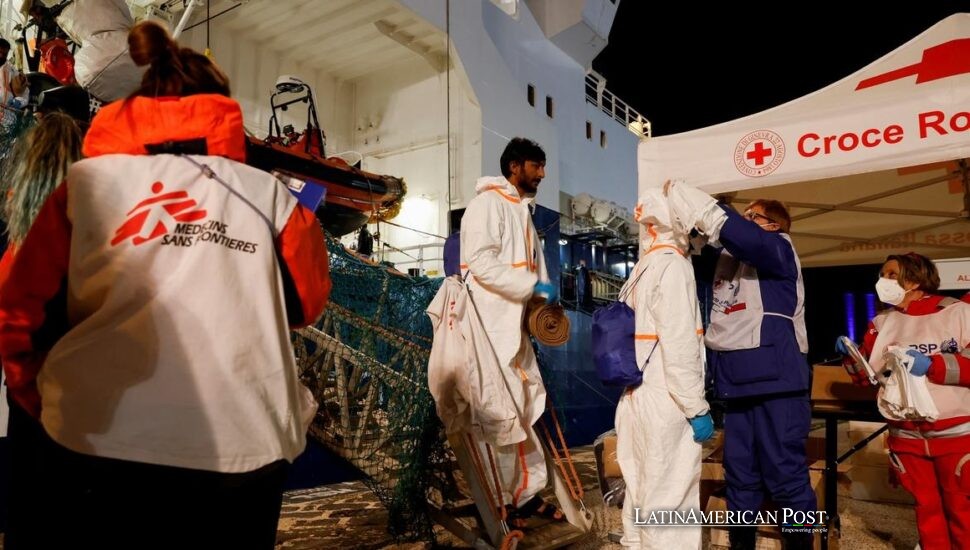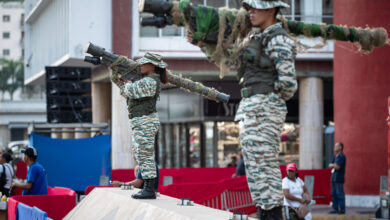Inside Haiti’s Last Trauma Ward, Holding the Line as a Nation Unravels

On the outskirts of Port-au-Prince, four makeshift operating rooms inside shipping containers now carry the weight of a country on the edge. As gunfire silences public hospitals, the Doctors Without Borders trauma center in Tabarre has become Haiti’s final safety net.
A Capital Turned Combat Zone
In neighborhoods once lit by carnival processions and painted masks, the soundtrack is now relentless: automatic fire, day and night. What was once a city of street musicians and market chatter has turned into a battlefield.
More than 5,600 Haitians were killed in 2023, according to U.N. figures, as federated gangs—operating under the name Viv Ansanm (“Live Together”)—tightened their grip on 90% of Port-au-Prince. These aren’t ragtag militias; they are organized, well-armed, and ruthless.
Al Jazeera reporters, embedded with medical staff at Tabarre, recorded live gunfire crackling just beyond the perimeter. Surgeon Xavier Kernizan described the situation plainly: “We’re the last line of defense in the trauma field.”
That line is impossibly thin. The State University Hospital, once the country’s largest public facility, never reopened after attackers sprayed bullets at a press conference there in December—killing two journalists and a police officer on the steps.
Supply routes are cut. Ambulances risk being hijacked. Many medical workers have already fled. What remains is a fragile ecosystem of gravel walkways, shipping containers, and perimeter guards patrolling on foot—now, improbably, the core of Haiti’s medical infrastructure.
Hospitals Under Siege, Patients Trapped in Crossfire
The emergency room at Tabarre rarely catches a break—until night falls. Not because the violence stops, but because reaching the clinic after dark is almost suicidal.
Al Jazeera’s crew learned why. After sundown, roads become open hunting grounds. Armed gangs shoot first, ask nothing later. Patients wounded after 5 p.m. often bleed until dawn.
Chrismene Desilhomme and her cousin Jean Claude Saget are two of the lucky ones. When armed men stormed their home, Jean Claude jumped from the rooftop and broke his leg. Chrismene was shot in the foot. The two spent the night in hiding, unable to reach help. When the sun rose, they crawled to Tabarre, where surgeons had no choice but to amputate Chrismene’s foot.
In another ward, a patient explained how gangs force families out by firing indiscriminately, then break passageways through home walls to move unseen from block to block.
Years ago, the late health geographer Paul Farmer described Haiti’s health system as “stretched on the rack of history.” That rack is now splintering.
Over a million Haitians are internally displaced, according to the World Food Programme, and nearly half the population faces acute hunger. Yet hospitals aren’t just overwhelmed—they’re being torched or taken over by armed groups.
Pockets of Care Amid a Crumbling State
Even inside Tabarre’s barbed-wire walls, where fear lives just beyond the gate, there are flickers of resilience.
Guards blast reggae from Lucky Dube, anthems of hope and survival. Wounded patients learn to walk again beside rainbow-colored murals and balance beams. On one of those beams, four-year-old Alexandro, who suffered severe burns when gangs torched a displacement camp, pushes toy cars between rounds of bandage changes.
“When I come to the hospital, it’s another world,” his mother Youseline Philisma told Al Jazeera. “Everybody gives us love.”
Surgeon Donald Jacques Severe could leave. He has a Canadian visa. But he stays. So does Kernizan. “If we’re not here,” Kernizan said, “someone else struggles.”
Anthropologists call it moral witnessing—that deep-rooted conviction among caregivers in war zones that to abandon your post is to abandon humanity. That conviction is often what keeps trauma teams from collapsing, even when the state around them already has.
But no one at Tabarre denies the toll. Staff are exhausted, under siege, and well aware that a single stray bullet could end it all.
The Thin Line Holding Haiti’s Healthcare Together
How long can Tabarre hold out?
Doctors Without Borders was forced to suspend services for three weeks earlier this year after gunfire hit one of its ambulances. Even now, rescue vehicles are grounded for safety.
Haiti’s interim government, crippled by factional infighting and corruption allegations, hasn’t held national elections since 2016. The national police are retreating to fortified compounds, while local communities arm themselves with homemade weapons in acts of desperate self-defense.
“Without real security guarantees, even the international NGOs will leave eventually,” warned Jeffrey Hall, a development economist who studies aid in conflict zones. “And when they do, routine injuries—gunshot or not—become death sentences.”
On April 11, Al Jazeera’s team left Port-au-Prince by helicopter, flown by the World Food Programme, one of the last safe ways out. The doctors remained.
They know the stakes. They see them every day in eyes clouded by pain, in families arriving on foot with bandaged limbs and whispered prayers.
Also Read: El Pollo’s Plea: How a Venezuelan Spy Chief Unmasked a Cocaine State Within the State
A nation’s future might not be built in shipping containers. But for now, Haiti’s last trauma ward is holding the line.
Whether it breaks or bends will depend not just on bullets and borders—but on whether anyone still believes in keeping the lights on through the darkest hours.





